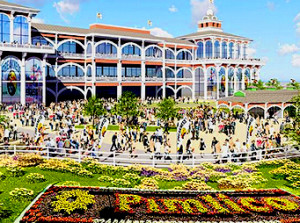If You Build It, They Will Come – Architect Todd Gralla
Click here to read the complete article218 – March/April, 2018
by Delores Kuhlwein
 She planted a kiss on his nose and then went back to wave her medal to the crowd with a tear-streaked face and huge grin.”
She planted a kiss on his nose and then went back to wave her medal to the crowd with a tear-streaked face and huge grin.”
When Britain’s Charlotte Dujardian won the individual Dressage gold medal on Valegro at the 2012 Summer Olympics in London, ESPN reported on the magic moment as it was viewed by millions. While the world watched as the hard work and dedication of a horse and rider team paid off on the Olympic stage, we likely only gave a passing thought to the setting of the incredible event. But it’s people like Todd Gralla of Norman, Oklahoma, who dedicate a lifetime to creating those captivating places and making these memories possible.
Our readers might recognize Todd from the APHA or AQHA arena as a successful Halter exhibitor, or from cheering on his son, Nicholas, in the Halter pen. You may have spied him proudly watching daughter, Lauren, or his wife, Tonya, compete at an APHA world-class event. However, he’s far from behind the scenes in the industry. He’s the Director of Equestrian Services for Populous, an international planning and architecture firm specializing in sport, public assembly, and equestrian project design and development.
In other words, he’s a global equestrian architect, and he’s instrumental to the development of some of the equestrian facilities you show at, or those you’ve only seen on television, and he’s been at it for more than 28 years.
A Connection to the Future
Todd and his team are currently working on the continuous improvement of venues like the Oklahoma State Fair Park, which hosts the AQHA Youth World Show, AQHA L1 Championships Central, AQHA Open and Amateur World Show, and many more top events. “The design of this building is revolutionary – we’re considering how shows and other events are monetized and how they can be more economically viable for both the show producers and host venues,” Todd says. “We know from our extensive experience with professional and collegiate sports that this directly relates to the venue design, so the seating products, amenities, food service, technology, and everything about it (the collective experience) is really important.”
Click here to read the complete article218 – March/April, 2018










